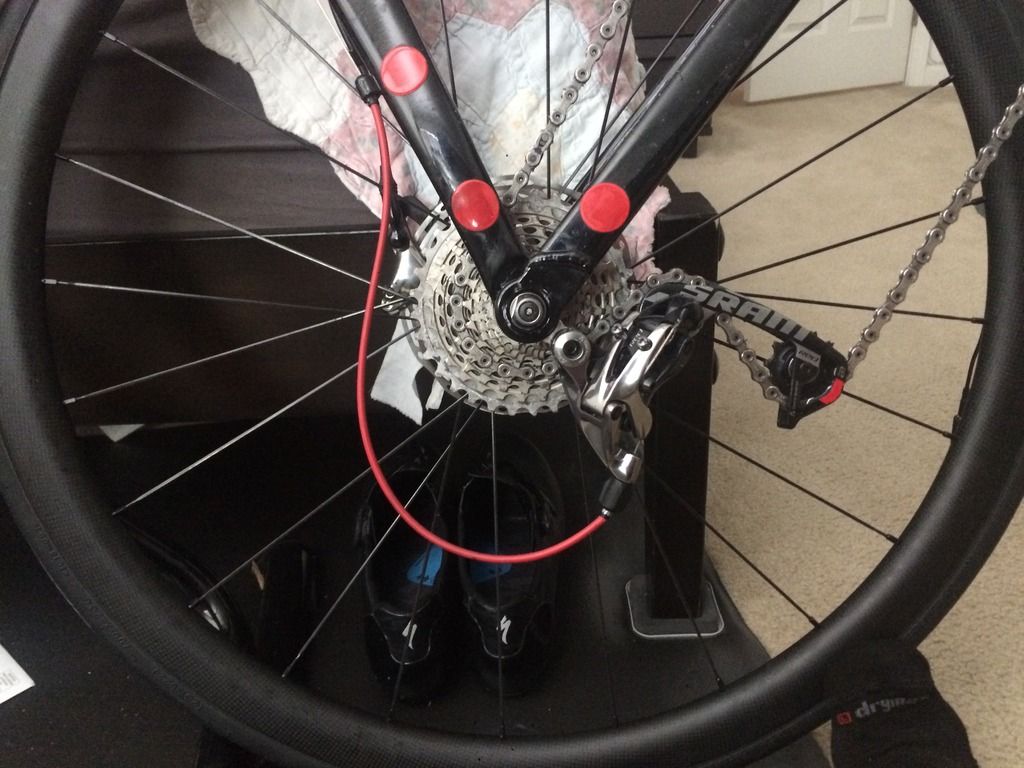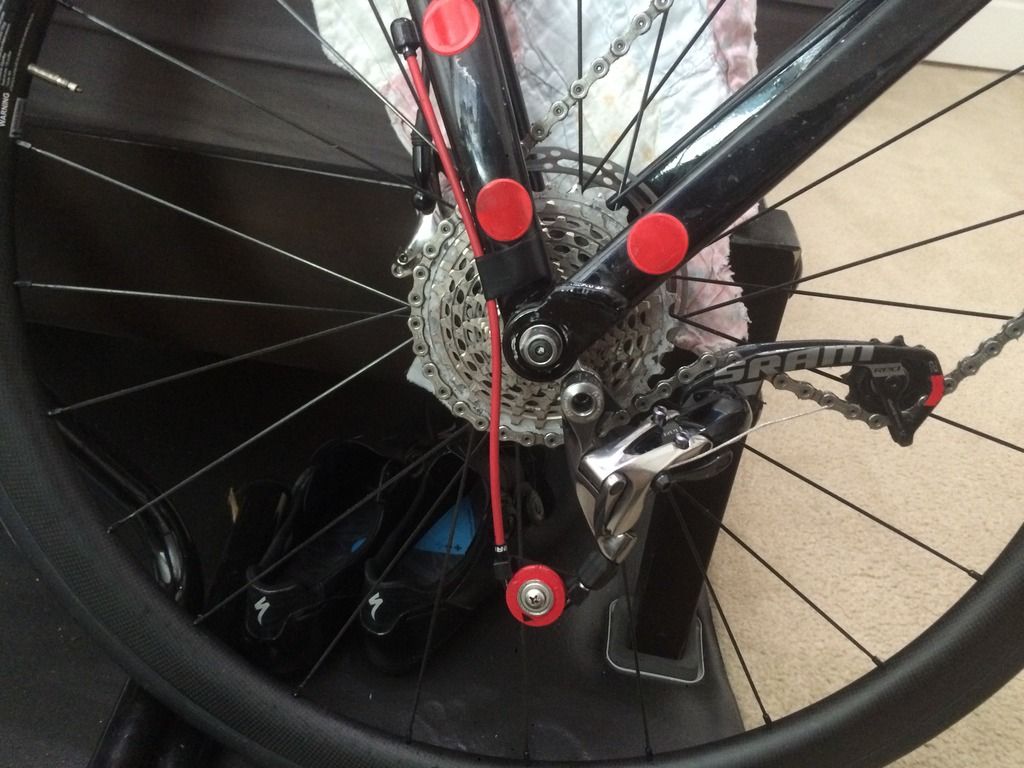RojoRacing
Donut Powered Wise-guy
The solution to the problem you didn't know you had, or a solution in need of a problem. These are both common phrases used to describe SRAMs long since discontinued Rolamajig. The device is meant to eliminate the large loop of shift housing that is needed with the old shimano mtb derailleurs and most road bike setups. Then years later when SRAMs own mtb derailleur design caught on which also eliminates the need for a loop they stopped production of the Rolamajig. Now 10 years later the Rolamajig is a well sought after collectors item among old school bike builders. Now I know most Cruzbike riders use a mtb rear Derailleur so you don't suffer with a huge loop hanging down next to the front wheel just waiting to get caught on something, but for those of us with roadie derailleurs aren't so lucky. After some time searching around for a Rolamajig for sale online I gave up the hunt and decided to make my own and of course better version.
This project has been in my head for the last 2 months but do to some debilitating injuries I suffered back in June I only recently was able to bring it to life. I actually made 4 versions of the device before getting the angle perfect as well as shrinking the foot print down to the absolute minimum. The black backing plate which holds the pulley as well and the cable ferrules is made out of Delrin(Machinists Plastic) so I weights almost nothing. The pulley is also plastic and houses a small stainless ball bearing for effortless movement. SRAMs old rolamajig used a cheaper plastic bushing design that would need cleaning and servicing to keep is moving freely. The ball bearing design should stay smoother for the life of your cables in decent weather conditions. I'm calling this a fair weather product since the actual shift cable is exposed as it wraps around the pulley which adds one more stop for weather to get in. I'd bet it would perform fine after many wet weather rides but since I never ride the road in the wet I can't properly test its performance in those conditions.
Below I'm including some before and after photos as well as video to show the Rojomajig in actions.
Large loop with SRAM RED 22, the housing leading into the derailleur was already showing signs of creasing from two months of use.

Rojomajig

This project has been in my head for the last 2 months but do to some debilitating injuries I suffered back in June I only recently was able to bring it to life. I actually made 4 versions of the device before getting the angle perfect as well as shrinking the foot print down to the absolute minimum. The black backing plate which holds the pulley as well and the cable ferrules is made out of Delrin(Machinists Plastic) so I weights almost nothing. The pulley is also plastic and houses a small stainless ball bearing for effortless movement. SRAMs old rolamajig used a cheaper plastic bushing design that would need cleaning and servicing to keep is moving freely. The ball bearing design should stay smoother for the life of your cables in decent weather conditions. I'm calling this a fair weather product since the actual shift cable is exposed as it wraps around the pulley which adds one more stop for weather to get in. I'd bet it would perform fine after many wet weather rides but since I never ride the road in the wet I can't properly test its performance in those conditions.
Below I'm including some before and after photos as well as video to show the Rojomajig in actions.
Large loop with SRAM RED 22, the housing leading into the derailleur was already showing signs of creasing from two months of use.

Rojomajig





